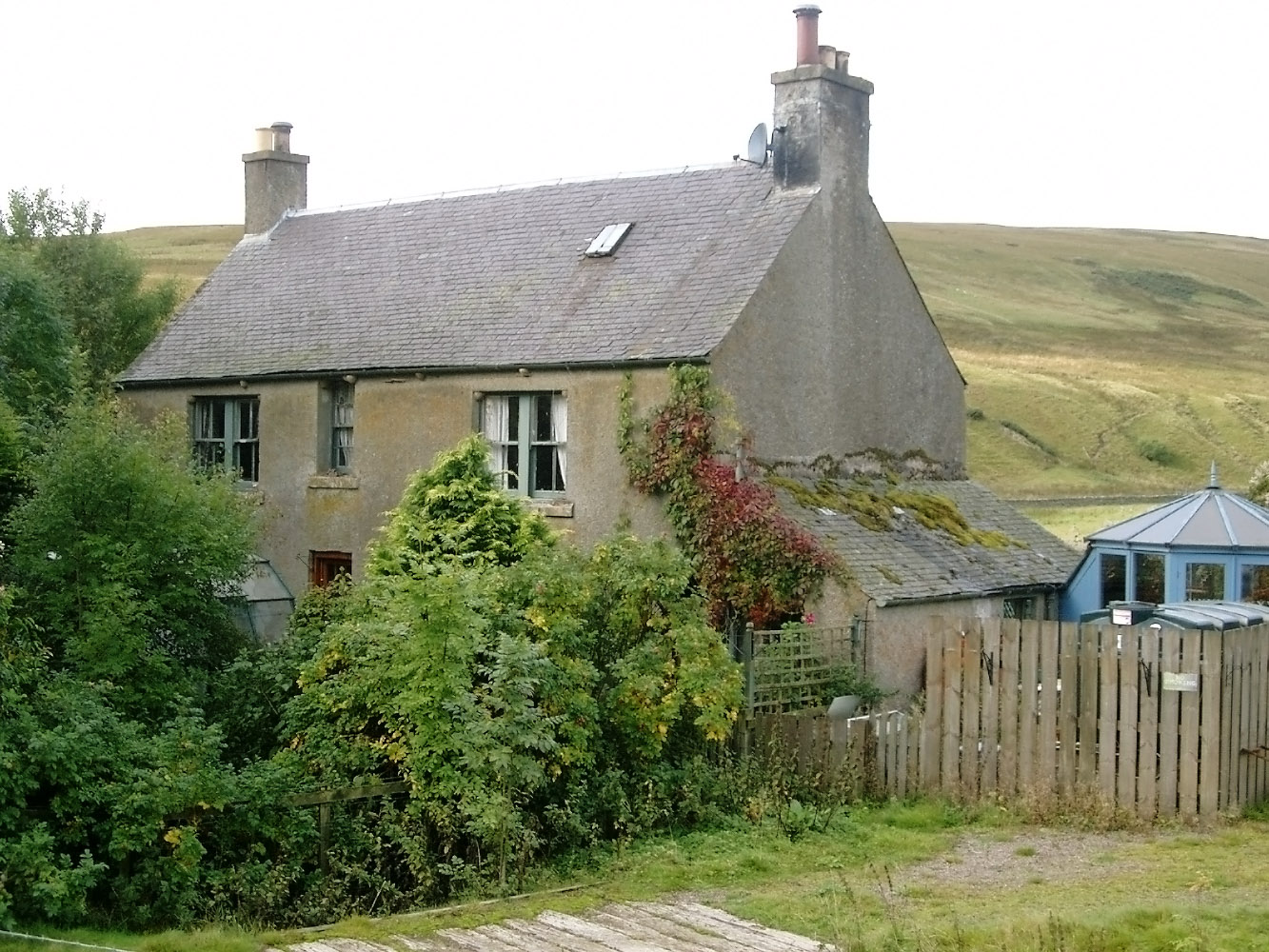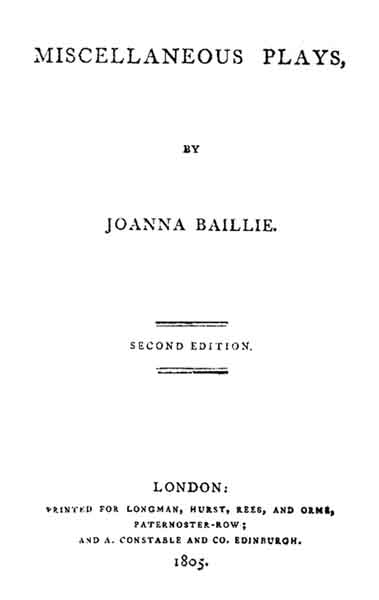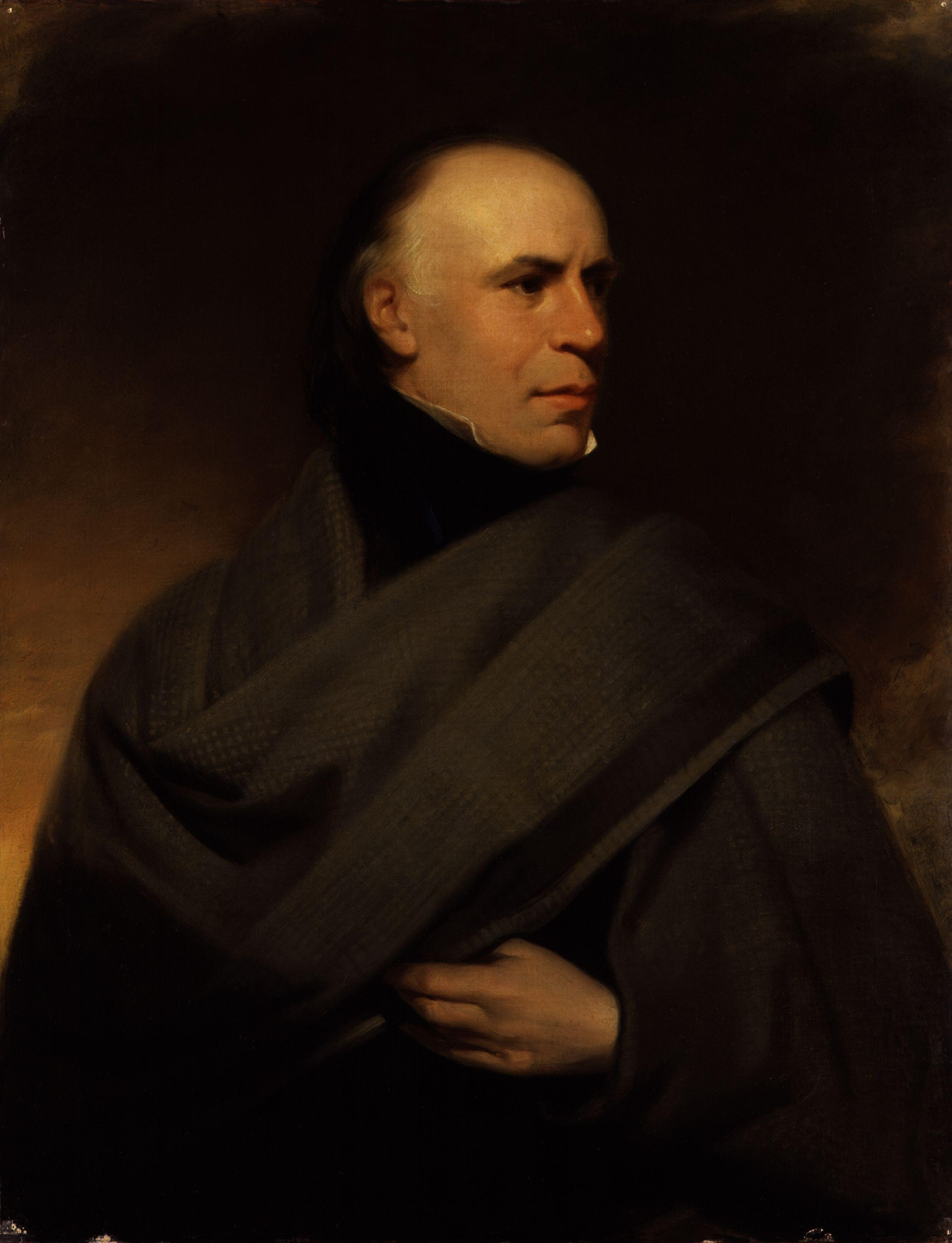|
The Spy (periodical By James Hogg)
''The Spy'' was a periodical directed at the Edinburgh market, edited by James Hogg, with himself as principal contributor, which appeared from 1 September 1810 to 24 August 1811. It combined features of two types of periodical established in the 18th century, the essay periodical and the miscellany. As an outsider, Hogg used his periodical to give a critical view of the dominant upper-class culture of Edinburgh, with Walter Scott and Francis Jeffrey as its leading lights, and to launch his career as a writer of fiction as well as poetry. Background Hogg established ''The Spy'' during the year when he exchanged farming life in the south of Scotland for a literary career in Edinburgh. It combined features of essay periodicals such as ''The Spectator'' and ''The Rambler'' and miscellanies such as ''The Scots Magazine''. Each issue had normally eight pages, usually containing an essay and one or more original poems. Hogg wrote over half the material himself, with James Gray (poet), J ... [...More Info...] [...Related Items...] OR: [Wikipedia] [Google] [Baidu] |
James Hogg
James Hogg (1770 – 21 November 1835) was a Scottish poet, novelist and essayist who wrote in both Scots and English. As a young man he worked as a shepherd and farmhand, and was largely self-educated through reading. He was a friend of many of the great writers of his day, including Sir Walter Scott, of whom he later wrote an unauthorised biography. He became widely known as the "Ettrick Shepherd", a nickname under which some of his works were published, and the character name he was given in the widely read series '' Noctes Ambrosianae'', published in ''Blackwood's Magazine''. He is best known today for his novel ''The Private Memoirs and Confessions of a Justified Sinner''. His other works include the long poem '' The Queen's Wake'' (1813), his collection of songs ''Jacobite Relics'' (1819), and his two novels ''The Three Perils of Man'' (1822), and ''The Three Perils of Woman'' (1823). Biography Early life James Hogg was born on a small farm near Ettrick, Selkirkshire, ... [...More Info...] [...Related Items...] OR: [Wikipedia] [Google] [Baidu] |
James Nicol (minister)
James Nicol (28 September 1769 – 5 November 1819) was a minister of the Church of Scotland, known as a poet and writer. Life The son of Michael Nicol, he was born on 28 September 1769 at Innerleithen, Peeblesshire, went to the parish school, and was originally destined to be a shoemaker. He qualified at the University of Edinburgh for the ministry, and after acting as tutor in private families was licensed to preach by the presbytery of Peebles (25 March 1801). Nicol became assistant to John Walker, parish minister of Traquair, near Innerleithen (15 May 1802), and succeeded to the charge, on the death of the incumbent, on 4 November. A knowledge of medicine acquired at university enabled him to vaccinate parishioners. In 1808 he founded the first friendly society at Innerleithen. After a change in his religious views Nicol contemplated resigning his charge. He died, after a short illness, on 5 November 1819. Works Nicol published at Edinburgh in 1805, in two volumes, ''Poems, c ... [...More Info...] [...Related Items...] OR: [Wikipedia] [Google] [Baidu] |
Robert Southey
Robert Southey ( or ; 12 August 1774 – 21 March 1843) was an English poet of the Romantic school, and Poet Laureate from 1813 until his death. Like the other Lake Poets, William Wordsworth and Samuel Taylor Coleridge, Southey began as a radical but became steadily more conservative as he gained respect for Britain and its institutions. Other romantics such as Byron accused him of siding with the establishment for money and status. He is remembered especially for the poem "After Blenheim" and the original version of "Goldilocks and the Three Bears". Life Robert Southey was born in Wine Street, Bristol, to Robert Southey and Margaret Hill. He was educated at Westminster School, London (where he was expelled for writing an article in ''The Flagellant'', a magazine he originated,Margaret Drabble ed: ''The Oxford Companion to English Literature'' (6th edition, Oxford, 2000), pp 953-4. attributing the invention of flogging to the Devil), and at Balliol College, Oxford. Southey ... [...More Info...] [...Related Items...] OR: [Wikipedia] [Google] [Baidu] |
John Black (journalist)
John Black (7 November 1783 – 15 June 1855) was a British journalist and newspaper editor. Early years Born in Berwickshire, Black's father was Ebenezer Black, a farm worker and former peddler who had married a co-worker on the farm, Janet Gray. Ebenezer Black died four years after they were married, leaving Janet to raise both a son and a daughter by herself. Within a decade, both Black's mother and sister had died as well. He was taken in by his uncle, also a worker on the farm, who sent him to the parish school at Duns before articling him out to a local writer. During this time, Black read extensively from the local subscription library and began a book collection that would become a major preoccupation of his life. After a brief period as a clerk for the British Linen Bank, Black went to work for an accountant in Edinburgh. In his spare time he attended classes at the University of Edinburgh and he undertook such literary work as translating German for David Brewster ' ... [...More Info...] [...Related Items...] OR: [Wikipedia] [Google] [Baidu] |
Theatre Royal, Edinburgh
The history of the Theatre Royal, Edinburgh involves two sites. The first building, on Princes Street, opened 1769 and was rebuilt in 1830 by Thomas Hosmer Shepherd. The second site was on Broughton Street. History The first Theatre Royal was in Shakespeare Square, at the east end of Princes Street. This was opened 9 December 1769 by actor-manager David Ross. Mary Bulkley performed here during the 1780s. In July 1792 Harriet Pye Esten became the theatre manager when she purchased the lease. The theatre had been run by Stephen Kemble but he lost the rights to perform which were withdrawn by Esten's lover Douglas Hamilton, 8th Duke of Hamilton. In 1794 Esten returned the rights to Stephen Kemble to perform in Edinburgh in exchange for £200 a year. In 1809 the theatre was taken over by Sarah Siddons's actor son, Henry Siddons. It went into a period of decline under his control, but following his death in 1815 was revived by his wife, Harriet Siddons and her brother Willia ... [...More Info...] [...Related Items...] OR: [Wikipedia] [Google] [Baidu] |
George Colman The Elder
George Colman (April 1732 – 14 August 1794) was an English dramatist and essayist, usually called "the Elder", and sometimes "George the First", to distinguish him from his son, George Colman the Younger. He also owned a theatre. Early life He was born in Florence, where his father was stationed as British Resident Minister (diplomatic envoy) at the court of the Grand Duke of Tuscany. Colman's father died within a year of his son's birth and William Pulteney- afterwards Lord Bath- whose wife was Mrs. Colman's sister, undertook to educate the boy. After he received private education in Marylebone, George attended Westminster School. Colman left school in due course for Christ Church, Oxford. There he made the acquaintance of the parodist Bonnell Thornton, with whom he co-founded '' The Connoisseur'' (1754–1756), a periodical which "wanted weight," as Johnson said, although it reached its 140th number. He left Oxford after taking his degree in 1755 and, having been entered a ... [...More Info...] [...Related Items...] OR: [Wikipedia] [Google] [Baidu] |
David Garrick
David Garrick (19 February 1717 – 20 January 1779) was an English actor, playwright, theatre manager and producer who influenced nearly all aspects of European theatrical practice throughout the 18th century, and was a pupil and friend of Samuel Johnson. He appeared in a number of amateur theatricals, and with his appearance in the title role of Shakespeare's '' Richard III'', audiences and managers began to take notice. Impressed by his portrayals of Richard III and a number of other roles, Charles Fleetwood engaged Garrick for a season at the Theatre Royal, Drury Lane in the West End. He remained with the Drury Lane company for the next five years and purchased a share of the theatre with James Lacy. This purchase inaugurated 29 years of Garrick's management of the Drury Lane, during which time it rose to prominence as one of the leading theatres in Europe. At his death, three years after his retirement from Drury Lane and the stage, he was given a lavish public funeral ... [...More Info...] [...Related Items...] OR: [Wikipedia] [Google] [Baidu] |
The Clandestine Marriage
''The Clandestine Marriage'' is a comedy by George Colman the Elder and David Garrick, first performed in 1766 at Drury Lane. It is both a comedy of manners and a comedy of errors. The idea came from a series of pictures by William Hogarth entitled '' Marriage à-la-mode''. Plot summary The plot concerns a merchant, Mr Sterling, who wants to marry off his elder daughter to Sir John Melvil, who is actually in love with her younger sister, Fanny. Fanny, however, is in love with a humble clerk, Lovewell, whom she has secretly married. Her attempts to extricate herself from the arrangement with Melvil lead to her becoming the proposed bride of Melvil's elderly uncle, Lord Ogleby. When the truth comes out, Fanny and Lovewell are forgiven. Performances Play and painting On 12 October 1769 the play was performed as a Royal Command Performance with Sophia Baddeley, Robert Baddeley and Thomas King appearing. These three were recorded acting in an oil painting by Johan Zoffany. Op ... [...More Info...] [...Related Items...] OR: [Wikipedia] [Google] [Baidu] |
Anne Grant
Anne Grant often styled Mrs Anne Grant of Laggan (21 February 1755 – 7 November 1838) was a Scottish poet and author best known for her collection of mostly biographical poems ''Memoirs of an American Lady'' as well as her earlier work ''Letters from the Mountains''. She personally exemplified the Scottish Highlands attributes which she admired: "virtuous and dignified poverty, elegance of sentiment that lives in the heart and conduct, and subsists independent of local and transitory modes." In worldly wisdom, in literature, and in piety, her early attainments were admirable, and they were in later life well sustained, if not augmented. Her reading seems to have been extensive, but desultory. For doing this, she had singular advantages in her personal intercourse with the Edinburgh and ''Quarterly Reviewers'', and in her constant habit of retailing her own opinions and their judgments in frequent conversations with other associates, and in numerous letters to her friends, so th ... [...More Info...] [...Related Items...] OR: [Wikipedia] [Google] [Baidu] |
Anne Bannerman
Anne Bannerman (31 October 1765 – 29 September 1829) was a Scottish poet. She was part of the Edinburgh literary circle which included John Leyden, Jessie Stewart, Thomas Campbell, and Robert Anderson. Her work was popular in her lifetime and "remains significant for her Gothic ballads, as well as for her innovative sonnet series and her bold original odes." Early life Bannerman was born in Edinburgh to Isobel (''née'' Dick) and William Bannerman, a "running stationer" licensed to sell ballads in the streets. Career Bannerman's early work was published, often pseudonymously, in periodicals, notably the ''Monthly Magazine'', the ''Poetical Register'', and the '' Edinburgh Magazine'', the latter of which was edited by her friend and supporter, Dr Robert Anderson. She was read and admired by Thomas Park, James Currie, Bishop Thomas Percy, Anne Grant, and antiquary Joseph Cooper Walker. Her first volume, ''Poems'' (1800), was well regarded but did not sell well. It contain ... [...More Info...] [...Related Items...] OR: [Wikipedia] [Google] [Baidu] |
Joanna Baillie
Joanna Baillie (11 September 1762 – 23 February 1851) was a Scottish poet and dramatist, known for such works as ''Plays on the Passions'' (three volumes, 1798–1812) and ''Fugitive Verses'' (1840). Her work shows an interest in moral philosophy and the Gothic. She was critically acclaimed in her lifetime, and while living in Hampstead, associated with contemporary writers such as Anna Barbauld, Lucy Aikin, and Walter Scott. She died at the age of 88. Early life Background Baillie was born on 11 September 1762 in Bothwell. Her mother, Dorothea Hunter (c. 1721–1806), was a sister of the Scottish physicians and anatomists William and John Hunter. Her father, Rev. James Baillie (c. 1722–1778), was a Presbyterian minister, and in his last two years Professor of Divinity at the University of Glasgow. Her aunt, Anne Home Hunter, was a poet. The Baillies were an old Scottish family which claimed descent from the Scottish patriot, Sir William Wallace. Wallace is not known to ... [...More Info...] [...Related Items...] OR: [Wikipedia] [Google] [Baidu] |
Allan Cunningham (author)
Allan Cunningham (7 December 178430 October 1842) was a Scottish poet and author. Life He was born at Keir, near Dalswinton, Dumfries and Galloway, and first worked as a stonemason's apprentice. His father was a neighbour of Robert Burns at Ellisland, and Allan with his brother James visited James Hogg, the "Ettrick shepherd", who became a friend to both. Cunningham's other brothers were the naval surgeon Peter Miller Cunningham (1789–1864) and the poet, Thomas Mounsey Cunningham (1776–1834). Cunningham gave his leisure to reading and writing imitations of old Scottish ballads. In 1809 he collected old ballads for Robert Hartley Cromek's ''Remains of Nithsdale and Galloway Song''; he sent in, however, poems of his own, which the editor inserted, even though he may have suspected their real authorship. It gained for him the friendship of Walter Scott and James Hogg. In 1810 Cunningham went to London, where he worked as a parliamentary reporter and journalist until ... [...More Info...] [...Related Items...] OR: [Wikipedia] [Google] [Baidu] |





